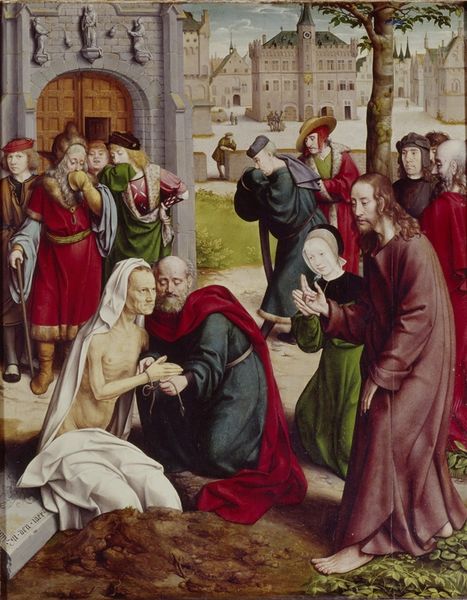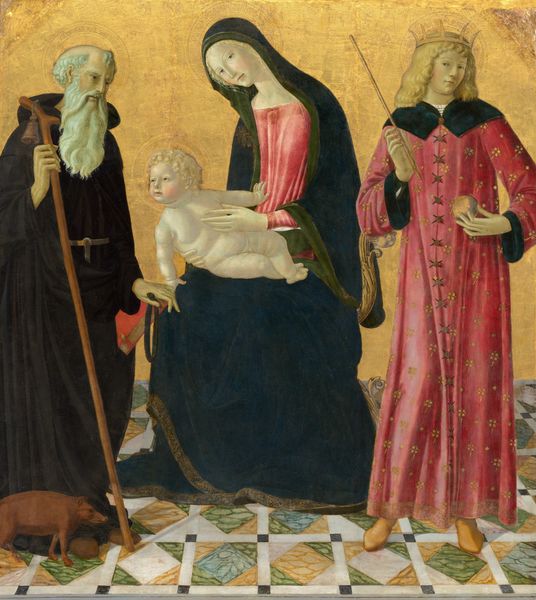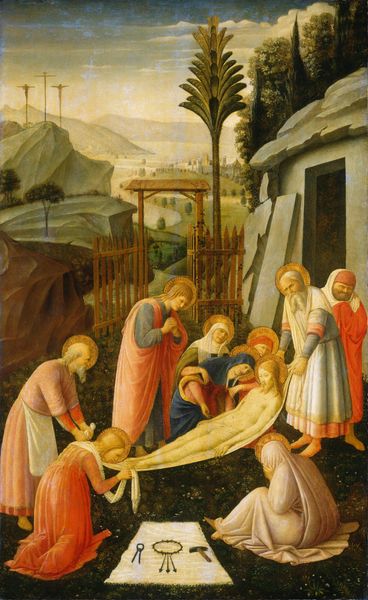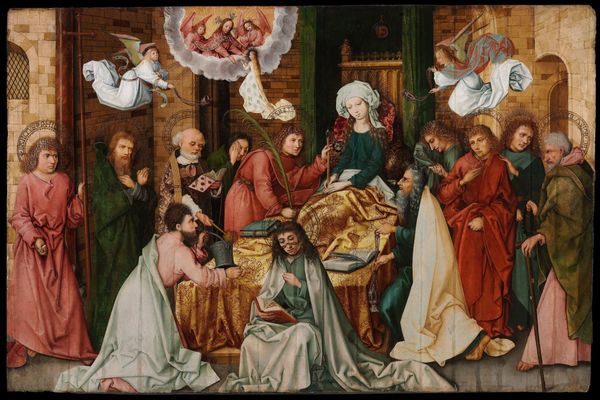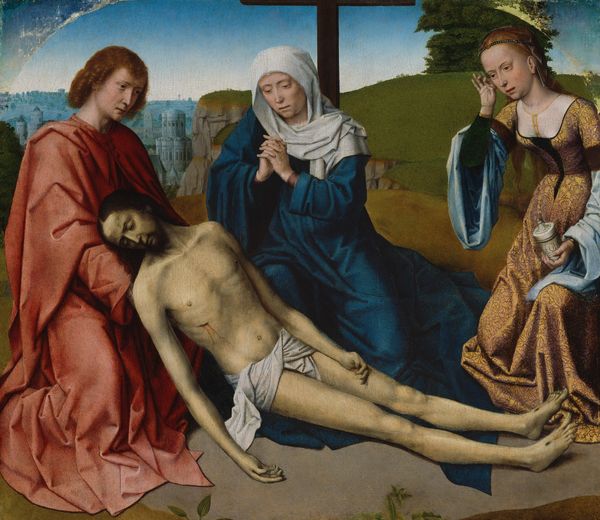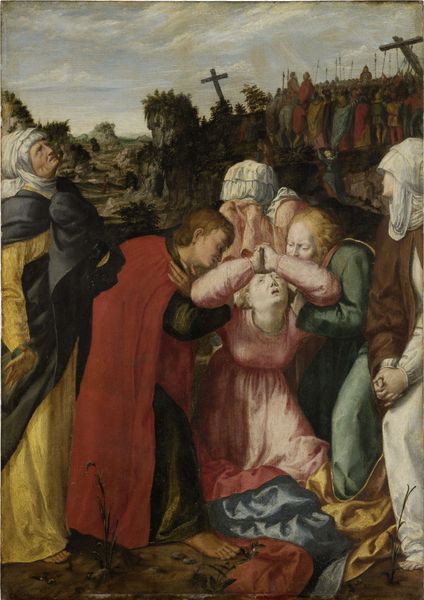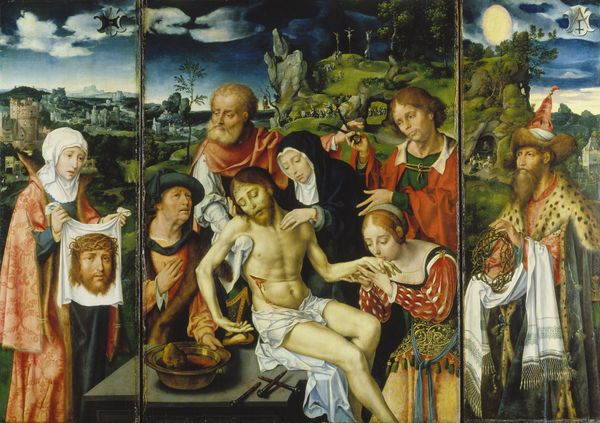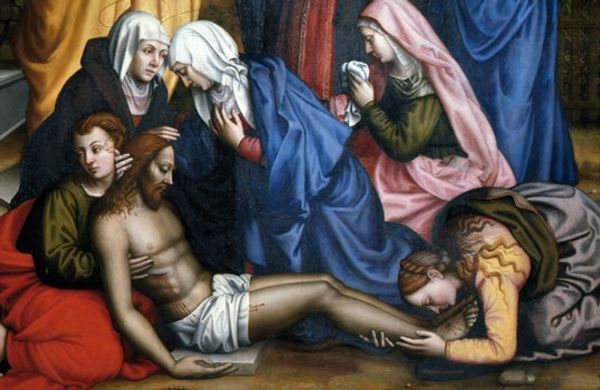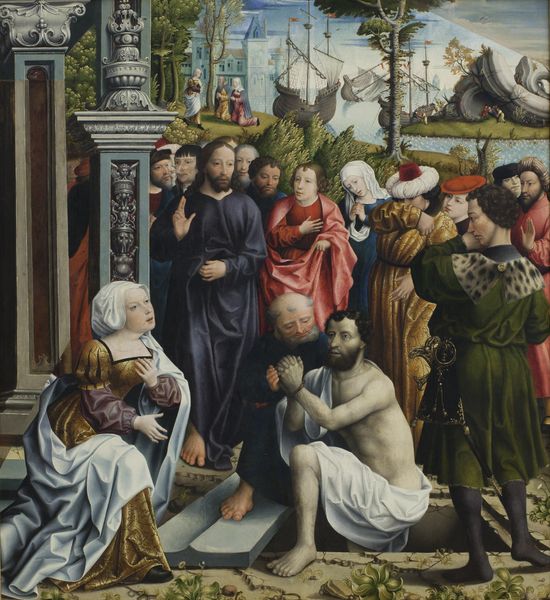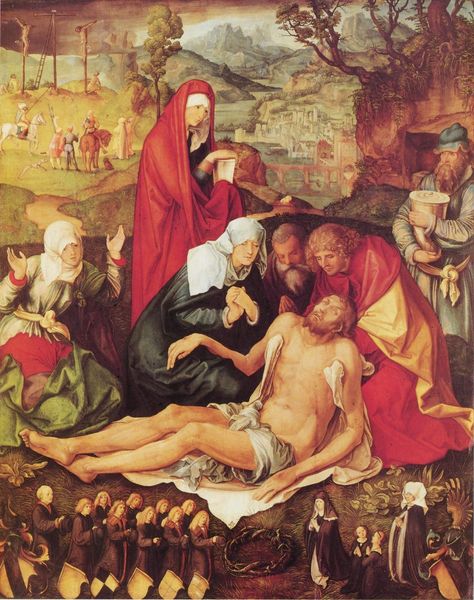
The Lamentation over the Dead Christ 1460
0:00
0:00
petruschristus
Royal Museums of Fine Arts of Belgium, Brussels, Belgium
#
gouache
#
handmade artwork painting
#
jesus-christ
#
underpainting
#
naive art
#
christianity
#
painting painterly
#
painting art
#
watercolour bleed
#
watercolour illustration
#
virgin-mary
#
watercolor
#
christ
#
watercolur painting
Dimensions: 192 x 101 cm
Copyright: Public domain
Curator: Oh, this strikes me as immediately poignant – almost theatrically so. The grief is palpable. Editor: Indeed. What we are looking at is "The Lamentation over the Dead Christ" created around 1460 by Petrus Christus. It's currently held at the Royal Museums of Fine Arts in Brussels. It offers such an intimate and human perspective on a universally resonant moment of sorrow. Curator: The artist’s emphasis on the human element truly does amplify the tragedy. I notice that in addition to the iconic Mother Mary, the image includes skull, representing death. Such visual details invite one to meditate on mortality and transcendence, while those painting tools at Christ feet signal something bigger, connecting spiritual life with mundane reality Editor: Precisely. Placing those ordinary tools in the foreground, alongside such intense mourning, serves to ground the sacred narrative within the everyday experiences of its viewers. The choice speaks volumes about art's role within 15th-century society: to bridge the gap between divine concepts and tangible reality. The arrangement and placement certainly make a statement about public faith in painting's religious power. Curator: Speaking of grounding, Christus' deliberate flattening of space enhances the work's emotional immediacy. There is a feeling as if all of the figures are brought forth and put into our reality. I think that the compressed space, by eschewing depth, functions psychologically to thrust viewers directly into this moment of collective grief. We're not observing; we are participating. Editor: And to take that participation a step further, you might agree that, through its composition, the piece is encouraging its intended audience to also acknowledge its ties to both the powerful social and theological role of religion and art itself in this time period. Christus positions his art as an advocate and instrument to make sense of faith in the face of suffering. Curator: A most effective method for both then and now. It has really stayed with me, all of this. The visual cues embedded in this small artwork prompt some rather large contemplation. Editor: Agreed. What seems like a straightforward depiction of loss, unfolds to reveal a layered understanding of faith, society, and the very purpose of creating images in the first place.
Comments
No comments
Be the first to comment and join the conversation on the ultimate creative platform.
